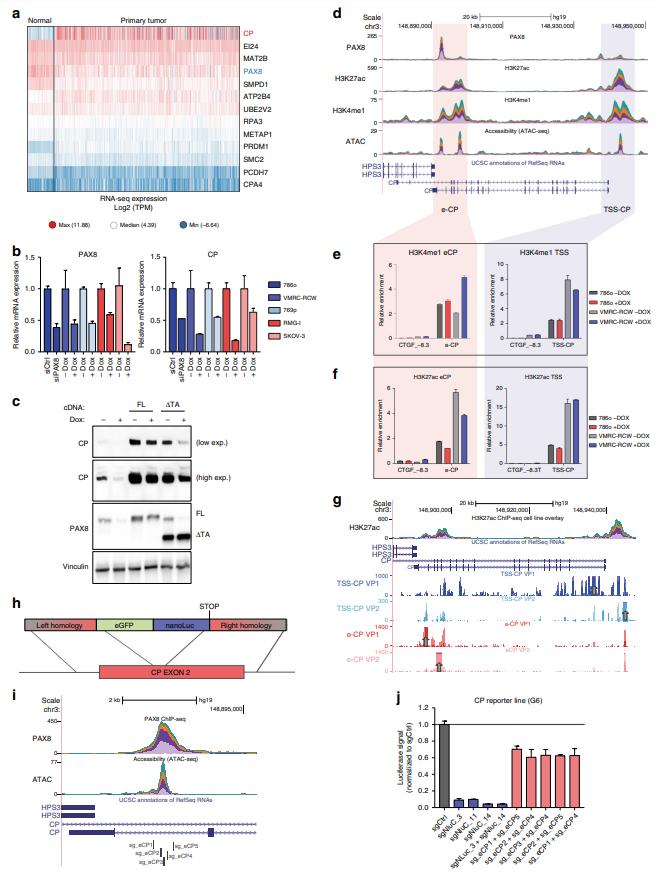Cas9 Stable Cell Line - 786-O
Cat.No. : CSC-RO0223 Host Cell: 786-O
Size: >1x10^6 cells/vial Validation: T7 Endonuclease I assay
Cat.No. : CSC-RO0223 Host Cell: 786-O
Size: >1x10^6 cells/vial Validation: T7 Endonuclease I assay
| Cat. No. | CSC-RO0223 |
| Product Type | Cas9 overexpression stable cell line |
| Introduction | Clustered regularly interspaced palindromic repeats (CRISPR)/Cas9 is a gene-editing technology that contains two essential components: a guide RNA (gRNA) to match a target gene, and the Cas9 (CRISPR-associated protein 9) endonuclease which causes a double-stranded DNA break, allowing modifications to the genome via nonhomologous end joining (NHEJ) or homology-directed repair (HDR). |
| Cell Line Information | 786-O-Cas9 cell line is engineered to stably overexpress Cas9 nuclease. The Cas9 nuclease in 786-O-Cas9 cell line has been functionally validated using T7 Endonuclease I assay. In combination with separately transfected sgRNAs, 786-O-Cas9 cell line can be used to efficiently generate targeted genomic modifications including gene knockout, gene knockin, gene mutagenesis, gene tagging etc. It is also an ideal cell line model for sgRNA screening and validation, either individually or in pools. |
| Target Gene | Cas9 |
| Host Cell | 786-O |
| Applications | 1) CRISPR genome editing, such as gene knockout (KO), gene knockin (KI), gene mutagenesis, gene tagging etc. 2) High-throughput sgRNA screening and validation |
| Quality Control | 1) T7E1 assay 2) Mycoplasma detection |
| Size Form | One vial of frozen cells, typically >1x10^6 cells/vial |
| Shipping | Dry ice |
| Storage | Liquid nitrogen |
| Species | Homo sapiens (Human) |
| Mycoplasma | Negative |
| Format | One frozen vial containing millions of cells |
| Storage | Liquid nitrogen |
| Safety Considerations |
The following safety precautions should be observed. 1. Use pipette aids to prevent ingestion and keep aerosols down to a minimum. 2. No eating, drinking or smoking while handling the stable line. 3. Wash hands after handling the stable line and before leaving the lab. 4. Decontaminate work surface with disinfectant or 70% ethanol before and after working with stable cells. 5. All waste should be considered hazardous. 6. Dispose of all liquid waste after each experiment and treat with bleach. |
| Ship | Dry ice |
Transcription factors play a critical role in regulating gene expression programs that determine cell identity and disease states. In Renal Cell Carcinoma (RCC), the Core Regulatory Circuitry (CRC) analysis identified PAX8 as a potential oncogene. Functional genomic screens confirmed that silencing PAX8 impairs RCC cell proliferation, while epigenomic studies revealed that PAX8 binds to active enhancer elements that control genes involved in metabolic pathways. One such gene, Ceruloplasmin (CP), was highlighted for its role in PAX8-mediated gene regulation. PAX8's recruitment of histone acetylation at enhancers impacts CP expression, which correlates with RCC cell sensitivity to PAX8 silencing. These findings underscore PAX8 as both an oncogene and a potential biomarker for RCC. The researchers used the 786-O Cas9 stable cell line to explore the effects of PAX8 silencing, utilizing lentiviral constructs for precise genetic modifications.
 Figure 1. The researchers employed a combination of RNA-seq, qPCR, and Western blot analysis to study PAX8 regulation of CP in RCC cells. Using the 786-O Cas9 stable cell line, they silenced PAX8 and examined its impact on CP expression and enhancer activity, validating results with ChIP-qPCR and luciferase assays. (Bleu M, et al., 2019)
Figure 1. The researchers employed a combination of RNA-seq, qPCR, and Western blot analysis to study PAX8 regulation of CP in RCC cells. Using the 786-O Cas9 stable cell line, they silenced PAX8 and examined its impact on CP expression and enhancer activity, validating results with ChIP-qPCR and luciferase assays. (Bleu M, et al., 2019)
Creative Biogene offers similar Cas9 stable cell line products, like the 786-O Cas9 line, enabling targeted gene editing for cancer research, including studies on gene function, drug resistance, and biomarker discovery.

Our promise to you:
Guaranteed product quality, expert customer support.
 24x7 CUSTOMER SERVICE
24x7 CUSTOMER SERVICE
 CONTACT US TO ORDER
CONTACT US TO ORDER